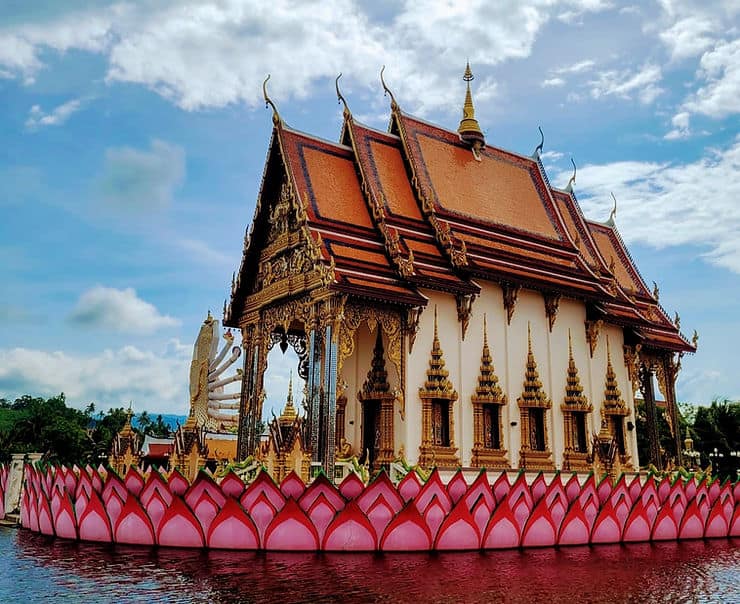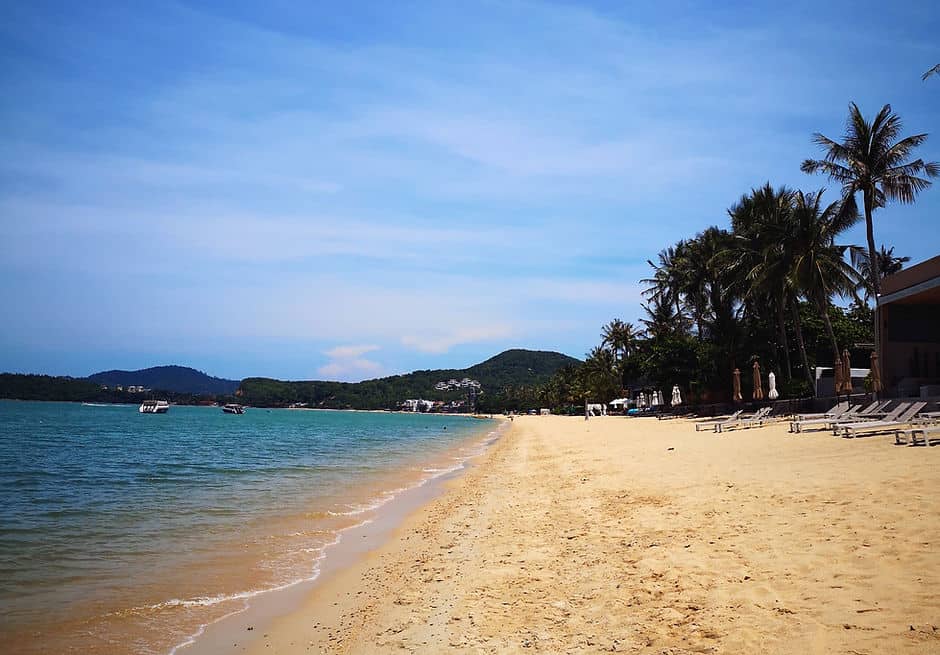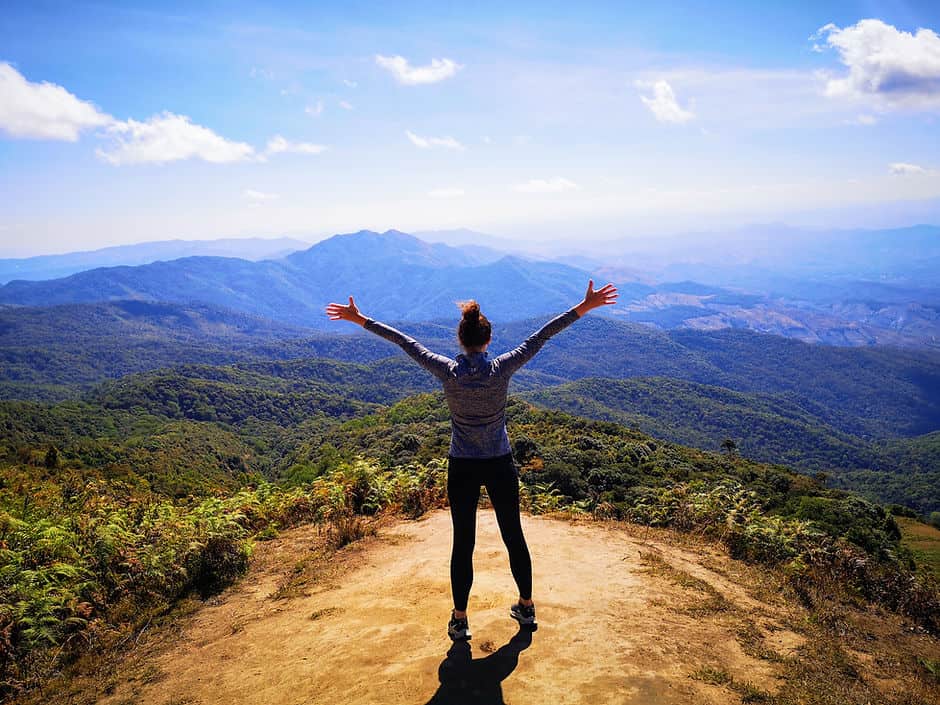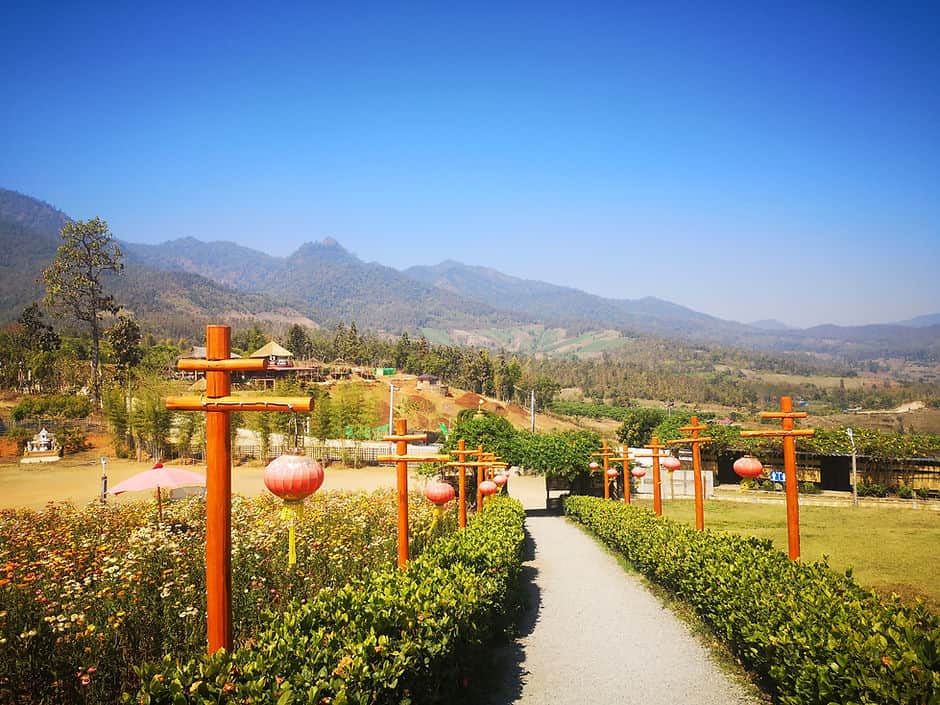
This post may contain affiliate links. I will receive a small commission if you use these links.
Pai is a small town in the rural mountainous region of Mae Hong Son in the north of Thailand. Its charm and laid back vibe has increasingly attracted backpackers over the years. More recently, it has developed a growing community of digital nomads, too. Pai is known for its rugged scenery, mountains and iconic attractions such as the Big Buddha and Bamboo bridge.
This combination of beautiful mountainous landscape with must-visit sights (and great food and cafes!) is what makes Pai so popular and one of the best places to visit in northern Thailand. If you’re planning a trip to Thailand, read these 12 amazing things to do in Pai to add to your itinerary!
Table of Contents
12 Amazing things to do in Pai, Thailand
Check out these 12 best things to do in Pai to add to your Northern Thailand itinerary
1. Watch the sunset at Pai Canyon
Watching the sunset over Pai Canyon is one of the best things to do in Pai. Crowds gather at the canyon to enjoy the spectacular sun setting over the valley. In peak season there are several food and drink stalls in the car park. It can get busy, but there’s room for everyone.
If you enjoy hiking, arrive earlier and take on one of the narrow, rocky hiking trails around the canyon first.
Pai Canyon is a 10 minute drive from the main centre of town. To get there, you will either need to ride a scooter, or you can join one of the many group sunset tours in town. The group tour is a great option if you want to enjoy a few beers whilst watching the sun set and it is relatively inexpensive. This is a great activity to add to your Thailand bucket list without breaking the bank.
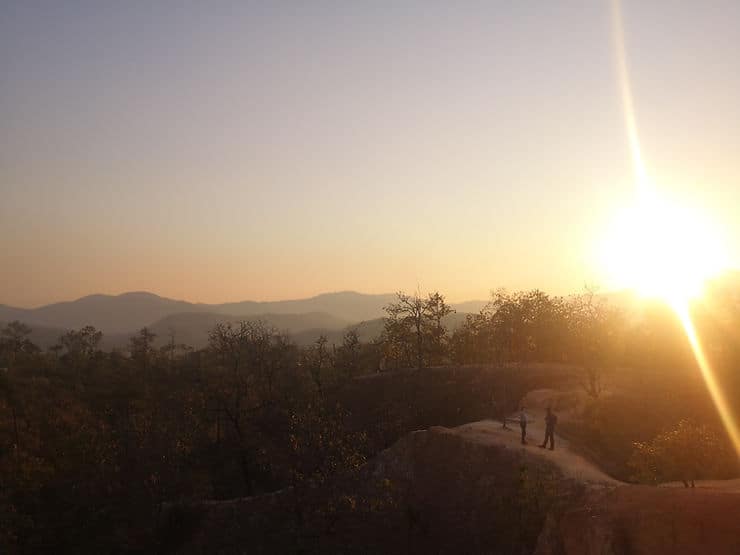
2. Relax in Pai’s thermal waters at a hot spring
Pai is blessed with natural thermal springs and there are a couple of hot springs located around Pai where you can go for a relaxing soak.
Sai Ngam hot spring is a 30 minute drive north of Pai. There are a couple of natural hot pools here as well as changing facilities and toilets. It does get busy, especially in the peak season (December – February). There is an entrance fee of 200 thb for foreigners (£5)
Ta Pai hot spring is only a 15 minute drive away from the main centre of Pai. However, the entrance fee is a little higher at 300 thb for foreigners (£7). There are a couple of hot pools here as well as basic changing facilities.
3. Visit Pai’s famous Bamboo bridge
The Kho-Ku-So Bamboo bridge is one of Pai’s most famous and iconic attractions. It has become more touristy over the years and now has several installations, specifically for photos. The surrounding landscape is really beautiful, with rice fields, mountains and small farming huts. The Bamboo bridge stretches quite a distance, so if you want to get away from the crowds, you can walk further along the bridge. The entrance fee is only 30 thb (£0.70) and there are several small huts where you can buy a coffee or a drink to sit and enjoy the view. The best time to visit Pai’s Bamboo bridge is during the rainy season (July – October), when the rice fields are full, with long, green crops. During the dry season, the rice has been harvested and it is not as picturesque, though still worth visiting.
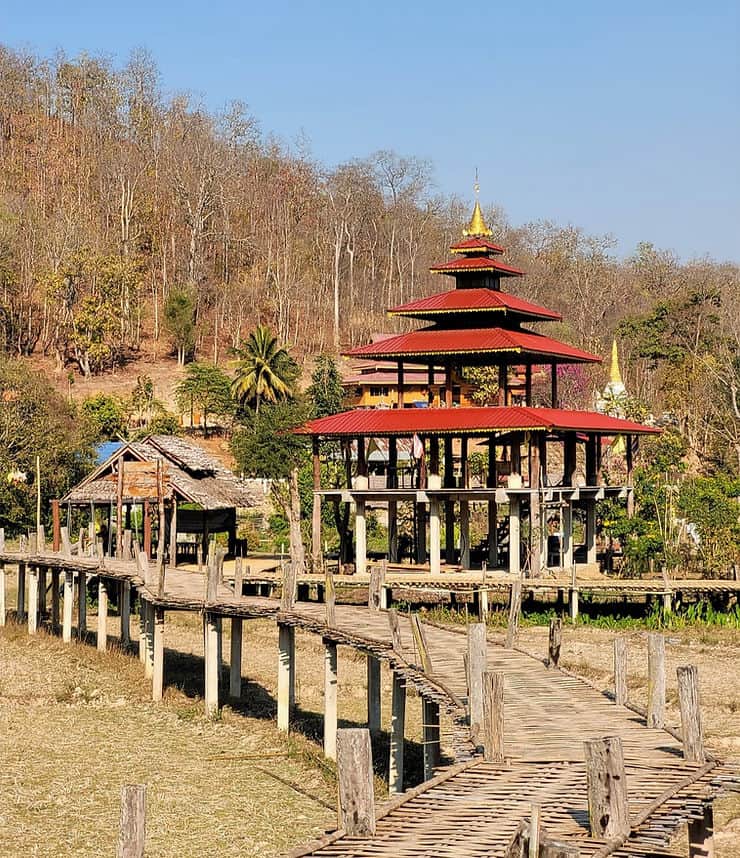
4. Go river tubing
River tubing is one of the best ways to spend an afternoon in Pai! You can hire an inflatable rubber tube from one of the tour operators in Pai town and float down the river at your own pace. A truck will drop you off and pick you up at a point further down the river. One of the most popular ways to enjoy Pai river is to join a ‘Tipsy Tubing’ group trip. Bring some drinks and make new friends as you float down the river, past the beautiful scenery of rural Thailand. Prices vary but can range from 200 thb to 400 thb (£5-10).
Another great place to try river tubing is during a trip to Khao Sok National Park
5. Enjoy Brunch in Pai town
Whilst Pai comes to life as the sunsets and the night market begins, there are still lots of places to enjoy lunch or a coffee during the day. Pai is full of cafes serving delicious brunch and lunch. There are lots of healthy and vegan options, too. If you want a day off from exploring, grab yourself a comfy seat in a cafe and enjoy a relaxing afternoon with a juice and a book.
6. Visit the Big Buddha
Not to be confused with the Big Buddha in Phuket, or Koh Samui, the Big Buddha in Pai is the town’s most visited landmark. The impressive, large white Buddha can be seen for miles as it stands tall at the top of 353 grand white steps. Once you’ve made it to the top, you will be rewarded with sweeping views over Pai and the surrounding mountainous countryside. The view is particularly spectacular at sunset, and whilst there is a sign stating that the gate closes at 6pm, there is no-one enforcing this and many visitors will stay past 6pm to watch the last of the sunset.
There is no entrance fee for visiting the Big Buddha, but you must be dressed appropriately. Knees and shoulders must be covered and shoes must be removed at the top. There are toilets and a couple of cafes and shops at the bottom too. The Big Buddha is only 2.2km outside of Pai’s main centre, so it is a quick 5 minute scooter ride, or you can walk there in 30 minutes, along the main road.
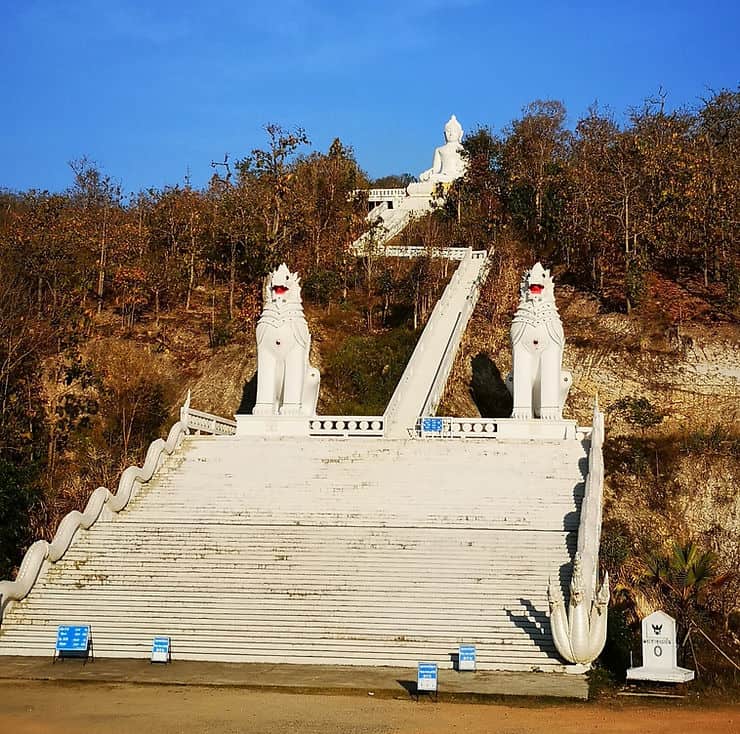
7. Visit Pam Bok Waterfall
Pam Bok Waterfall is one of the most popular waterfalls near Pai as it is easily accessible. It is just a 20 minute ride from the centre of Pai (close to the Kho-Ku-So Bamboo bridge) and a short walk from the car park to reach the falls. You can go for a quick dip in the pools, though they are quite shallow. The best time to visit Pam Bok waterfall is during the rainy season from July – November when the water and pool is at its fullest. During the dry season, the waterfall is reduced to barely a trickle.
8. Swim at Mo Paeng Waterfall
Mo Paeng waterfall is another popular natural spot near Pai, with gorgeous mountain views. This waterfall can get quite crowded as it has several refreshing pools to swim in and a natural rock slide to enjoy at the base of the waterfall. There’s a small entrance fee of 100 thb (£2.50) to help fund improvements to the area. Mo Paeng waterfall is less than 20 minutes from Pai and is great to combine with a visit to Yun Lai viewpoint and Santichon Chinese Village. The best time to visit is during the rainy season of July – October when the water level in the pools are at their highest.
9. Sample delicious local food at Pai night market
A trip to Pai is not complete without spending an evening (or several) at Pai night market! The night market takes over the central high street running through Pai, with lots of delicious street food on offer such as spring rolls, falafel, curries, nachos and noodles. All of the bars allow you to take food from the market into the bar, so you can enjoy a drink whilst sampling the street food! Although it is nowhere near as impressive as the epic Sunday night market in Chiang Mai, it is still a great market and a fun way to spend an evening in Pai.
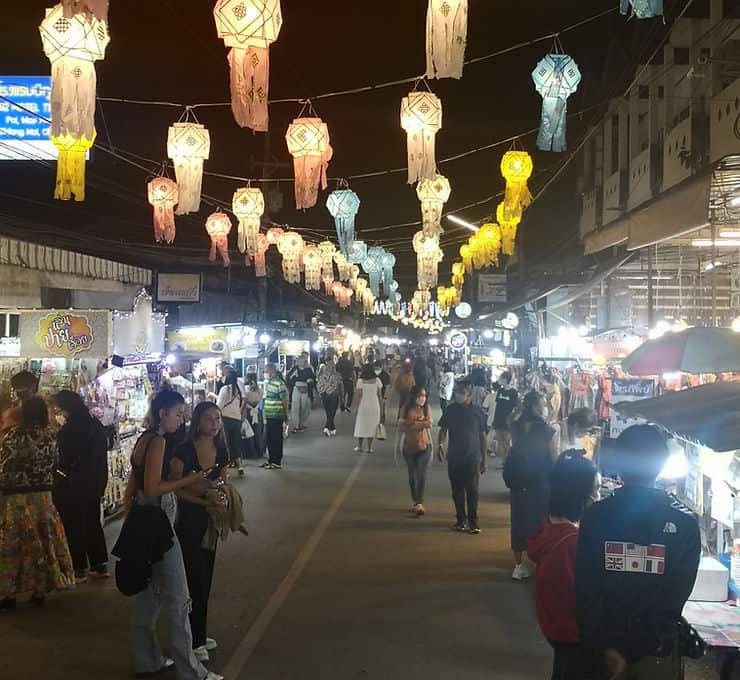
10. Take a trip to Tham Lod cave
Tham Lod cave (or Nam Lod cave) is located 70 minutes drive from Pai, along winding, mountain roads. The historic cave is well worth the journey though, with 3 large chambers, full of huge stalactites and stalagmites and interesting rock formations. The first two chambers in the cave can be reached by walking along a series of wooden boardwalks and on the cave floor. However, the 3rd chamber can only be reached by taking a ride on a bamboo raft.
You will need a guide to take you through the caves. If you only want to visit the first two chambers, the cost of the guide (1 guide for 1-3 people), is 150 thb (£3.50). However if you want to explore the 3rd and final chamber by bamboo raft (which I would highly recommend), you will need to pay an additional 400 thb (£9.50) for the raft guide (1 guide for 1-3 people). The guide will lead you through the dark cave, carrying a small oil lamp to light the way.
The whole tour of the caves takes about 1.5 hours and if you plan your visit so you finish the tour as the sun sets, you will be in time to see the swarm of bats and birds as they leave the cave, circling around for food.
Are the Tham Lod Caves worth visiting?
If you want to get away from the main centre of Pai and experience some of the natural beauty in the rural mountains surrounding Pai, then a visit to Nam Lod caves is a must. Whilst the caves are not quite as impressive as the incredible Paradise cave in Vietnam’s Phong Nha, the Tham Lod caves are definitely worth visiting. If you don’t fancy the 1 hour scooter ride, you can join a tour. There are several tours on offer, many of which combine a trip to Nam Lod caves with some of the other attractions surrounding Pai, including the hot springs and the Santichon Chinese village.
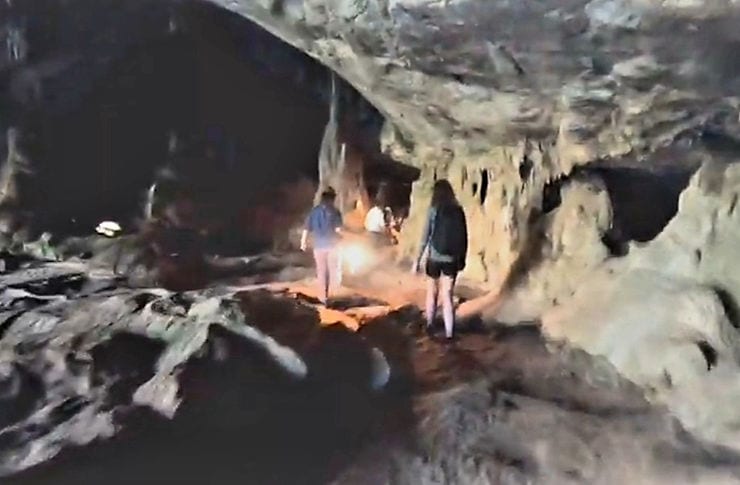
11. Watch the sunrise at Yun Lai Viewpoint
Yun Lai Viewpoint (sometimes called Chinese Viewpoint), is one of the most spectacular viewpoints in Pai and is one of the best places to watch the sunrise. Just 14 minutes drive from Pai, and close to Santichon Chinese Village, Yun Lai viewpoint can be found at the top of a steep hill. There are several photo spots here as well as a couple of cafes.
From here, you will get panoramic views of the valley, and as the mist rises from the forest, it is often referred to as the ‘most romantic view in Pai’. There’s an entrance fee of 20 thb (£0.50) to go to the highest official viewpoint, but the views are brilliant from every direction!
12. Visit Santichon Chinese Village
The Santichon Chinese Village is made for tourists, and some might say ‘gimmicky’, but it can be a good place to stop as you explore other sights in and around Pai. There’s a ‘castle’ with views over the surrounding countryside, as well as a small lake, perfect for taking photos in traditional Chinese robes, which you can rent. There’s also a couple of small traditional rides and activities such as archery and a BB gun shooting range. Pick up some souvenirs or fruit wine at one of the market stalls in the village. The Santichon Chinese Village is only a 12 minute ride from the centre of Pai, so worth a stop if you are out exploring Pai.
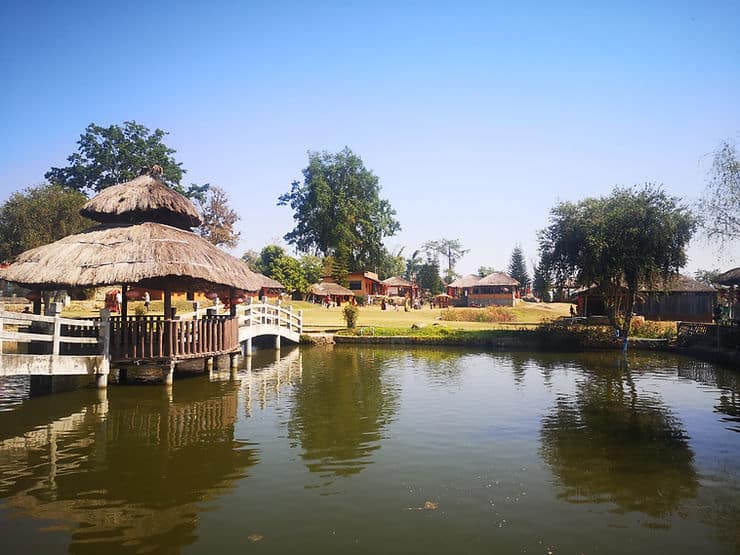
How many days do you need in Pai?
3-4 days is a good amount of time to spend in Pai. This will give you a good amount of time to visit the main sights and attractions that Pai has to offer. If you have your own scooter and want to explore further afield, then you may wish to stay for a couple of days longer, however, you will be able to see the best of Pai in 2-4 days.
When is the best time to visit Pai?
The warmest and driest months in Pai are from December – April. However, It is recommended to avoid the months of March and April as this is when the ‘burning season’ will be in full swing. During this time, farmers burn their old crops ready to plant new. In the height of burning season, the air will become very thick with fog and smoke, making breathability and visibility tricky.
Peak season, when Pai is the busiest, is during December and January, as the weather is considered to be the most favourable during this time. Prices of accommodation will increase and attractions and sights will be more crowded. It is worth noting that if you visit during peak season, you will not experience the Bamboo bridge or the waterfalls at the best time. With this in mind, October and November are good months to visit Pai if you want to see waterfalls and the rice fields full of green crops. It should also be less crowded at this time.
How to get to Pai?
The best way to get to Pai is by bus from Chiang Mai. Chiang Mai is easy to get to, with regular flights, trains and buses connecting the city with the rest of Thailand. There are several minibus companies that operate between Pai and Chiang Mai every day and the journey takes 4 hours, including a short rest stop. The journey should cost around 240 thb (£5-6) and buses can be booked online, via 12go or direct from Chiang Mai bus station. Be warned, the road between Chiang Mai and Pai is notorious for making travellers feel motion sick. One of my top tips for travelling in Southeast Asia on journeys like this is to take some motion sickness tablets! These can be picked up cheaply at 7/11.
How to get around in Pai?
There are less public transport options in Pai, therefore the best way to get around is by scooter. However, be warned that the roads around Pai are steep and winding, as they make their way around the mountains. If you are not an experienced scooter rider, Pai probably isn’t the best place to learn. If you don’t ride a scooter, there are motorbike taxis you can hire from Pai main street, or join one of the tours to see several of the highlights in Pai.

